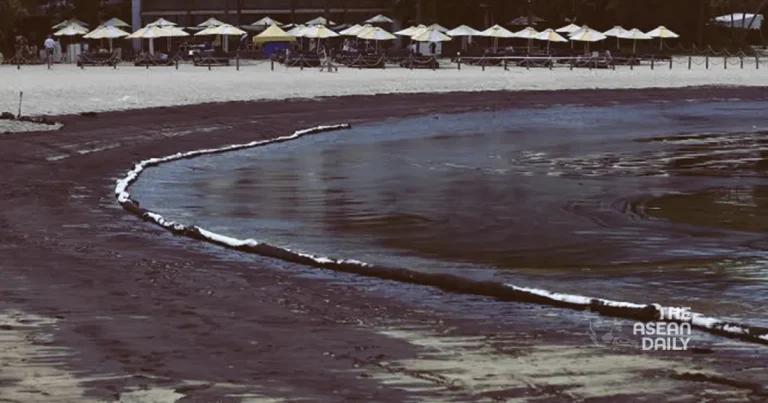15-6-2024 (SINGAPORE) Beaches on the idyllic Sentosa island were forced to close on Saturday after an oil spill from a nearby shipping terminal spread to the popular tourist haven south of the city-state.
Eyewitnesses reported a distressing scene, with tape cordoning off the oil-stained waters and sand of Tanjong Beach, denying visitors access to the once-pristine shoreline. A foreboding sign left no room for ambiguity: “Oil slick spotted. Clean up in progress. Please stay clear of water.”
The Sentosa website echoed the grim warning, advising that the waters of Tanjong, Palawan, and Siloso beaches were temporarily off-limits for cleaning, with swimming and other sea activities strictly prohibited.

The source of the environmental catastrophe was traced to the Pasir Panjang Terminal, a mere 10 kilometres from the island that draws throngs of tourists and locals alike. On Friday afternoon, a harrowing collision occurred when a Netherlands-flagged dredger struck a stationary Singapore-flagged bunker vessel, unleashing a torrent of oil into the surrounding waters.
In a statement issued on Friday evening, the Maritime and Port Authority of Singapore (MPA) acknowledged the gravity of the situation, confirming that oil from the damaged cargo tank on the bunker vessel had spilled into the water. However, the authority assured that “the affected cargo tank has been isolated and the spill contained.”
Yet, the situation took a turn for the worse on Saturday, with the MPA reporting patches of oil observed off Pasir Panjang Terminal and along the pristine beaches of Tanjong, Palawan, and Siloso. In response, the authority mobilized a formidable force, deploying 16 oil spill response craft “to continue spraying oil dispersants and to collect the oil slicks on the water surface.”
Amid the unfolding crisis, the MPA sought to reassure the public that navigational traffic remained unimpeded and that berthing operations at Pasir Panjang Terminal were unaffected.




